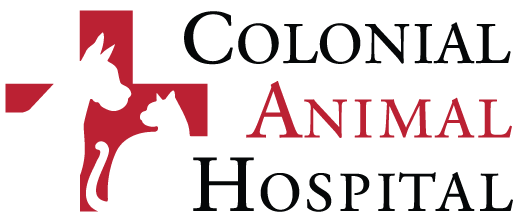One of the most important factors in maintaining optimum health for your pet is oral hygiene. Can you imagine what your mouth, breath, and teeth would be like if you never brushed them?
Periodontal disease is present in 80% of dogs and 70% of cats over 2 years of age. Bacteria accumulate in the periodontal tissues. This manifests itself to the naked eye as swelling of the gum tissue, redness, and plaque formation on the teeth. Once periodontal disease sets in, bacteria are constantly released into the bloodstream affecting the liver, kidney, and heart. If it is not addressed promptly, it can lead to severe consequences for your pet.
In fact, we feel so strongly about this, that we encourage you to schedule an evaluation with one of our doctors. During the consultation, the doctor will examine your pet’s mouth – as much your pet will allow – and then you and your doctor will make a treatment plan and/or schedule your pet’s dental cleaning, as well as discuss long-term, daily actions you can take to help improve your pet’s oral health.
Non-Anesthetic Dentistry (NAD)
Some people will claim that pets do not need anesthesia for a dental cleaning to be effective and safe. Do not be misled. Non-anesthetic dentistry is a cosmetic procedure only and does nothing to treat the underlying disease. Only a veterinarian is able to effectively examine your pet’s mouth, check for lesions or abnormalities, remove tartar and plaque, and treat the medical condition it presents. Ideally, a good cleaning and polishing might be all that is required, especially if bi-annual cleanings are started early in your pet’s life.
Prior to the dental cleaning, your pet will be placed under gentle anesthesia. This, of course, prevents your pet from struggling during the oral evaluation. The doctor examines and probes each tooth individually, noting any changes in the periodontal pocket depth, as well as looking for any cracked, chipped, or broken teeth. In addition, the doctor examines the entire oral cavity, including the tonsils, soft and hard palate, tongue, cheeks, and vocal cords. This exam sometimes reveals abnormalities that can be easily handled during the treatment. We make sure that your pet is comfortable and safe during the entire procedure.
Dental digital radiography may be recommended in order to determine if the tooth root is viable or infected. It is possible that extractions may be necessary.
If that is the case, extractions are done in exactly the same manner as they would be for you or me. A local anesthetic block is administered which will last long after your pet awakens. The affected tooth or teeth are gently but effectively extracted and follow up x-rays are done to make sure all of the tooth root remnants have been removed.
Pain medications, as well as anti-inflammatories and antibiotics, are usually given by injection and also prescribed for your pet on discharge. After the dental procedure has been completed and the anesthesia has worn off, your pet is usually back to their normal self within minutes.
Isn’t anesthesia risky for my pet?
Anesthetic risk is always present, but if proper pre-anesthetic testing and evaluation is done, the risk of anesthesia is very low. (Roughly 1 in every 2,000 patients has an adverse reaction). Everyone is concerned about anesthetic risk, especially our doctors and para-professional staff. We use the latest in anesthetic monitoring equipment to ensure your pet’s safety. In addition, a veterinary nurse is with your pet before, during, and after the anesthetic procedure to monitor for any possible complications.
Remember, anesthesia is a health-related risk, not an age-related risk. We anesthetize elderly patients often, with minimal complications.

